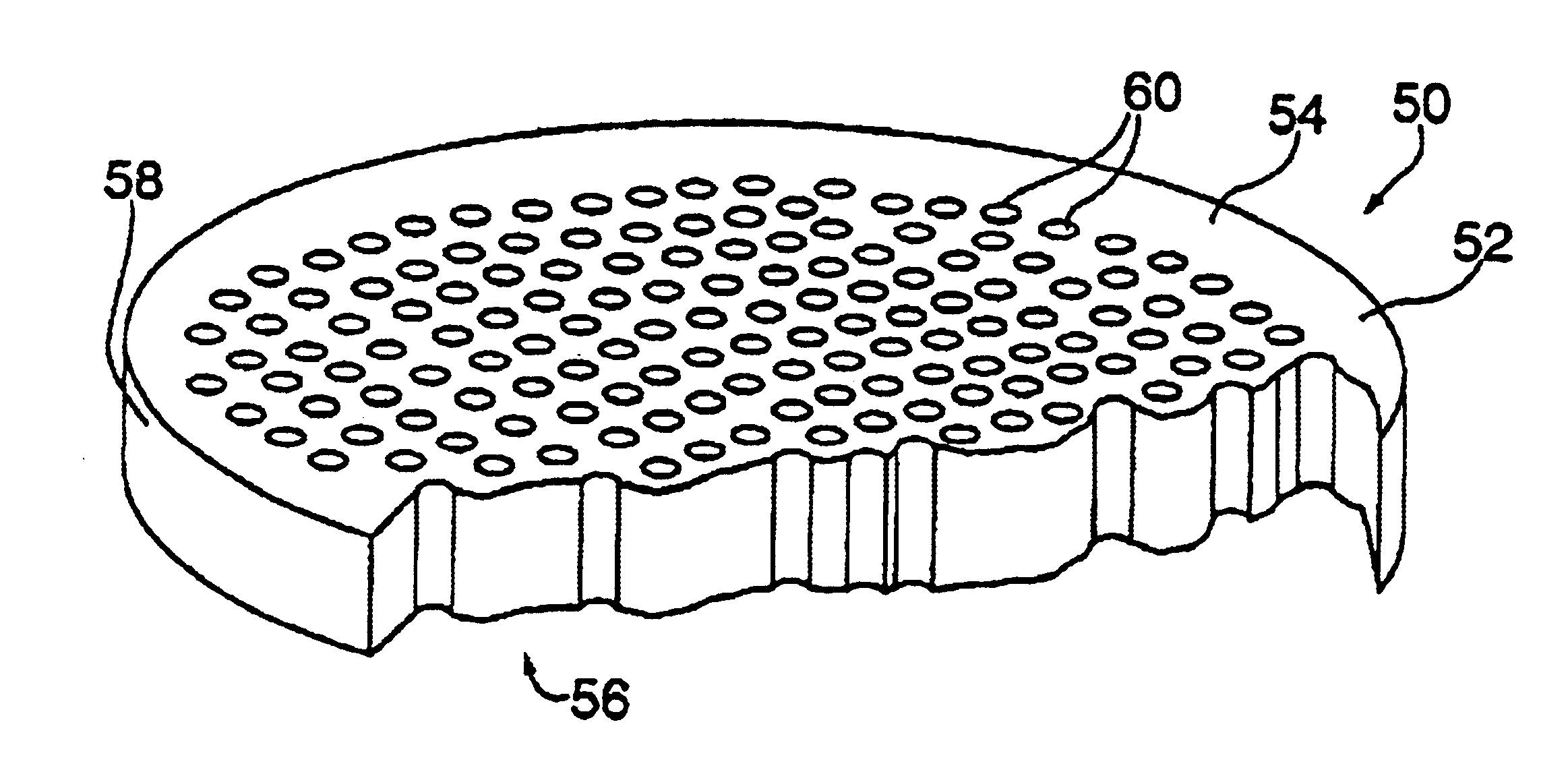High resolution tiled microchannel storage phosphor based radiation sensor
a radiation sensor and high-resolution technology, applied in the field of xray imaging screens, can solve the problems of loss of spatial resolution and contrast in images, grainy images, etc., and achieve the effect of increasing resolution, high resolution and ensuring accuracy
- Summary
- Abstract
- Description
- Claims
- Application Information
AI Technical Summary
Benefits of technology
Problems solved by technology
Method used
Image
Examples
Embodiment Construction
[0028]Basic Construction
[0029]FIG. 2 illustrates a microchannel phosphor screen 50 for converting radiation impinging thereon to visible light which has use, for example in an X-ray imaging system. Microchannel phosphor screen 50 comprises a substrate 52 which has an upper planar surface 54, a lower planar surface 56 and a cylindrical edge 58. Extending from upper surface 54 to lower surface 56 of substrate 52 are a multiplicity of small channels (“microchannels”) 60 which have a diameter on the order of about 0.5-40μ (microns) and more usually 5-20μ. Microchannels 60 are spaced apart approximately 1 to 12 microns, and the plate has a thickness on the order of 50-2000 microns (which is also the length of the microchannels). The material used as the substrate can be glass, silicon (crystalline, alpha, amorphous, or polysilicon as used in the fabrication of integrated circuits) as well as metals such as aluminum as techniques for the micro formation of microchannels exist for all of t...
PUM
 Login to View More
Login to View More Abstract
Description
Claims
Application Information
 Login to View More
Login to View More - R&D
- Intellectual Property
- Life Sciences
- Materials
- Tech Scout
- Unparalleled Data Quality
- Higher Quality Content
- 60% Fewer Hallucinations
Browse by: Latest US Patents, China's latest patents, Technical Efficacy Thesaurus, Application Domain, Technology Topic, Popular Technical Reports.
© 2025 PatSnap. All rights reserved.Legal|Privacy policy|Modern Slavery Act Transparency Statement|Sitemap|About US| Contact US: help@patsnap.com



